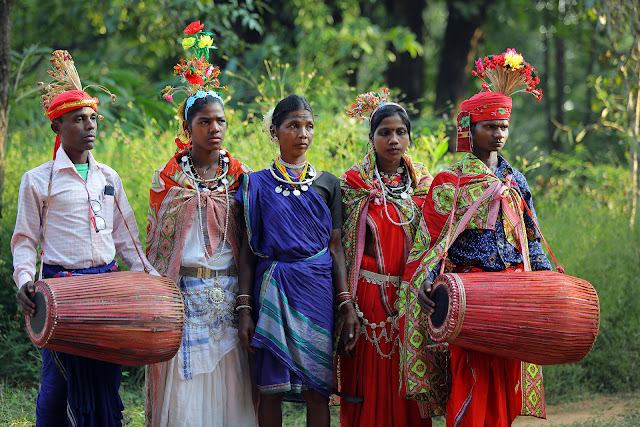Birds of Serenity Jungle Retreat: A Photo Gallery
Central India has close to 450 species of birds spread over its beautiful landscapes. It also has the benefit of falling in the path of some major flyways of Asia, Africa and Australia. The post-monsoon months give us the chance to better gauge the migratory patterns of the birds of this region and, as such, a good pair of binoculars and a spotting scope come in extremely handy to observe the size, colour and plumage of the birds. These aviators have mesmerised the human psyche for thousands of years and their existence has been immortalised through the works of artists, poets and historians alike.
 |
| A Young Specimen of the Oriental White-Eye |
A morning walk around the lush campus of Serenity Jungle Retreat gives the Birder ample opportunities to get familiar with the resident birds of Kanha National Park. I woke up at 5:30 am yet again and having gathered my equipment went about the business of watching, observing and photographing these winged friends. Seen in the picture above is the Oriental White-Eye (Zosterops palpebrosus). This bird is widespread in central Indian region and can be encountered in almost all habitats from urban gardens to fringe forests. The greenish-yellow to bright-yellow back and throat, white to greyish undersides, white eye ring and square tail characterise these tiny birds. This youngling of the white eye was not more than 3 inches long in size and was fluttering around in the lower hedges of a tree. Hard to capture in lens, this encounter was certainly the highlight of the day.
 |
| Orange-Breasted Green Pigeon |
I found the above pictured bird (Treron bicinctus) curiously lying down on the ground. It seemed as if it has been injured somehow and was resting its legs or wings in the soft grass of the main gardens at Serenity. Upon a closer approach, however, it flew away with the distinctive flutter of its wings. I was glad that this chap was alright after all. A rare resident of woodland patches with thick foliage, they are known to feed on berries and congregate in big numbers on fruiting trees, especially figs.
 |
| A Pair of Black-Hooded Oriole |
Black-Hooded Oriole (Oriolus xanthornus) is a common resident of the forests of central India. These Black and Yellow birds are known to most often restrict themselves to the top canopies, coming down only when the food is plenty - insects, fruits and nectar. Personally, I think these are one of the most beautiful birds of this region, however, their calls would have the listener imagining them otherwise.
 |
| An Alexandrine Parakeet Feeding on Fruit |
The Alexandrine Parakeet (Psittacula eupatria) is the largest of the Indian parakeets (not Parrots, please), the other two being the Rose-Ringed Parakeet and the Plum-Headed Parakeet. Key markers are its size, stout red beak, pink ring around the hind neck merging with the black stripe on the chin, and a red shoulder patch. This particular bird was found gnawing off happily on fruits of a tree on higher canopy. They are common everywhere in the Kanha region.
 |
| A Golden-Fronted Leafbird |
As to why these birds are known as Leafbirds should be a no-brainer. Their brilliant green plumage merges extremely well with the leaves it perches on, providing excellent camouflage. Despite being a bird that is often heard, they are seldom seen because of their ability to blend with the foliage and preference for the top canopies. Their preferred food is insects, berries and nectar. This particular image was taken from a long distance away, hence the lack in clarity of the image. Strikingly beautiful nonetheless.
 |
| A Black-Winged Kite Perched Atop a Barren Tree |
These small kites (Elanus caeruleus) are a common sight in open areas like fields and grasslands. Taking up prominent perches they ambush prey like small birds, mammals, reptiles and insects. They chase away larger intruders with repeated dives. This particular bird sat for minutes basking under the warm winter sun.
I am continuing to explore more and find out interesting facets about the lives of these avian creatures of Kanha. :)


Comments
Post a Comment